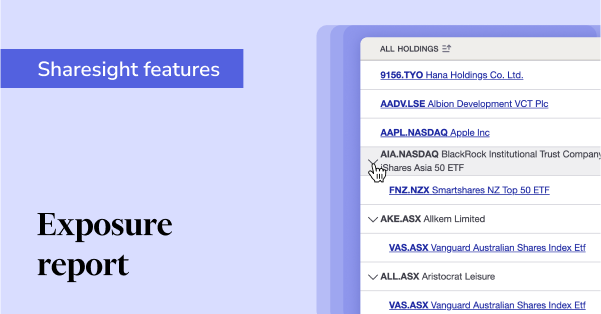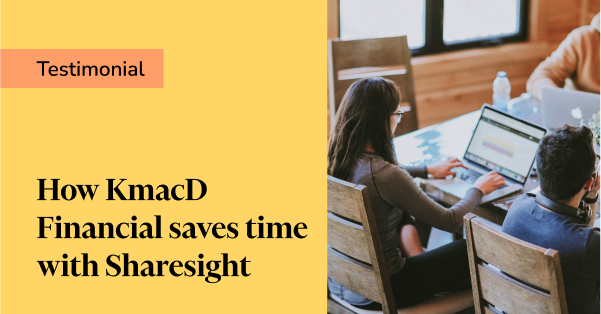The tax admin trap for Australian ETF investors
Disclaimer: Sharesight does not provide tax or investment advice. The buying of shares can be complex and varies by individual. Seek tax and investment advice specific to your situation before acting on any information in this article.
This piece was originally published on the Morningstar website
Exchange-traded funds continue to gain popularity with self-directed investors and it's easy to see why. They offer access to a basket of securities, often with low management fees, conveniently rolled-up into one security that trades like a stock on the exchange.
Launched in 1993, assets invested in ETFs globally broke through the $5 trillion mark in 2019. On the back of this, Bank of America strategists now predict the ETF market will hit $30 trillion in assets under management by 2030. That’s on par with the GDP of the entire US economy.
Looking at our own data on ETF popularity from over 100,000 DIY investors and financial professionals who track their portfolio and investment performance with Sharesight, 36 per cent of self-managed super fund (SMSF) users bought or sold an ETF in 2019, a significant increase on a figure of only 5 per cent in 2009.

Despite these advantages, ETFs can become a tax administration nightmare for investors who choose to go off-platform or don't rely on a managed service.
ETF tax admin in Australia
ETFs create tax complications because the Australian Taxation Office (ATO) classifies them as trusts, not ordinary company shares. Complicating matters further, the ATO changed the rules around investment trusts in 2016 by creating the Attribution Managed Investment Trust (AMIT) regime.
What is an Attribution Managed Investment Trust?
To understand Attribution Managed Investment Trusts, a good place to start is Managed Investment Trusts (MITs). An MIT is a trust structure that allows investors to purchase "units" in the trust to access the underlying investment activities the trust is set up to undertake, generally investing in shares, bonds, or property.
In 2016 the Australian government overhauled MITs with the aim of making fund administration easier and the sector more competitive globally by introducing AMITs.
The AMIT structure allows trustees to "attribute" taxable income to investors, without the need to make a distribution payment to unit holders. Removing the need to pass through all income immediately, as with traditional trusts.
This change has implications for how the cost base is handled and introduces several complications for investors at tax time.
An example: Vanguard Australian Shares ETF (ASX: VAS)
If we look at an AMMA statement from Vanguard’s VAS shares, which paid four dividends throughout the financial year this statement is from, those payments morphed into 17 distributions and two capital gains components on the annual taxation statement. In turn these correspond to 10 items on an individual tax return. Staggering complexity for just one buy!

Why does this happen?
VAS invests mostly in ASX shares, whose companies in turn pay dividends, are subject to franking credits and which undergo corporate actions. This creates all sorts of tax implications. VAS also invests in unlisted securities, derivatives and overseas companies each with their own tax nuances.
As time goes by, you receive VAS distributions in cash (usually quarterly or half yearly), along with a simple statement from the registry showing the net payment. At the end of the year, the registry will send you a final AMMA statement.
These final statements contain all the component and subcomponent information and are far more detailed than what you received during the year. This information can retroactively modify your cost base and taxable dividend income, making your tax lodgement very difficult and risking investors paying more tax than they need to.
ETF investors need to be mindful of the tax implications
ETFs opened a world of opportunities for investors. I use them myself as a building block for my portfolio. But one thing we’ve learned from our users at Sharesight is that with this ease of access to investments opportunities through ETFs, comes additional tax administration burdens that investors need to be mindful of.
To help limit this ETF tax admin burden on investors we’re working with our partners at Computershare to automatically provide accurate AMIT trust distribution data directly within Sharesight. Securing this data takes time, but we’re looking forward to having this available for the most recent financial year soon.
FURTHER READING

See what’s inside your ETFs with Sharesight’s exposure report
See inside your ETFs and get the full picture of your investment portfolio's composition with Sharesight's exposure report.

How KmacD Financial streamlines reporting and saves time with Sharesight
We talk to financial planning firm KmacD Financial about how the Sharesight-AdviserLogic integration helps them save time and streamline client reporting.

Sharesight product updates – November 2023
The focus over the past month has been on implementing additional feature ideas relating to our new (beta) exposure report.